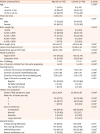1. Baker SS, Liptak GS, Colletti RB, Croffie JM, Di Lorenzo C, Ector W, et al. Constipation in infants and children: evaluation and treatment. A medical position statement of the North American Society for Pediatric Gastroenterology and Nutrition. J Pediatr Gastroenterol Nutr. 1999; 29:612–626.

2. van den Berg MM, Benninga MA, Di Lorenzo C. Epidemiology of childhood constipation: a systematic review. Am J Gastroenterol. 2006; 101:2401–2409.


4. Tabbers MM, DiLorenzo C, Berger MY, Faure C, Langendam MW, Nurko S, et al. Evaluation and treatment of functional constipation in infants and children: evidence-based recommendations from ESPGHAN and NASPGHAN. J Pediatr Gastroenterol Nutr. 2014; 58:258–274.


5. Biggs WS, Dery WH. Evaluation and treatment of constipation in infants and children. Am Fam Physician. 2006; 73:469–477.

7. Iacono G, Merolla R, D'Amico D, Bonci E, Cavataio F, Di Prima L, et al. Gastrointestinal symptoms in infancy: a population-based prospective study. Dig Liver Dis. 2005; 37:432–438.


8. Tunc VT, Camurdan AD, Ilhan MN, Sahin F, Beyazova U. Factors associated with defecation patterns in 0-24-month-old children. Eur J Pediatr. 2008; 167:1357–1362.


9. Çamurdan AD, Beyazova U, Özkan S, Tunç VT. Defecation patterns of the infants mainly breastfed from birth till the 12th month: prospective cohort study. Turk J Gastroenterol. 2014; 25:Suppl 1. 1–5.

10. Zanardo V, Gamba P, Menti C, Trevisanuto D. Induction of meconium evacuation and stooling habit development in premature infants: role of gestational age. Minerva Pediatr. 2010; 62:545–549.

11. Stewart ML, Schroeder NM. Dietary treatments for childhood constipation: efficacy of dietary fiber and whole grains. Nutr Rev. 2013; 71:98–109.


12. Loening-Baucke V, Miele E, Staiano A. Fiber (glucomannan) is beneficial in the treatment of childhood constipation. Pediatrics. 2004; 113:e259–64.

13. Tabbers MM, Benninga MA. Constipation in children: fibre and probiotics. BMJ Clin Evid. 2015; 2015:0303.
14. Wegh CA, Schoterman MH, Vaughan EE, Belzer C, Benninga MA. The effect of fiber and prebiotics on children's gastrointestinal disorders and microbiome. Expert Rev Gastroenterol Hepatol. 2017; 11:1031–1045.


15. Vandenplas Y, Alarcon P, Alliet P, De Greef E, De Ronne N, Hoffman I, et al. Algorithms for managing infant constipation, colic, regurgitation and cow's milk allergy in formula-fed infants. Acta Paediatr. 2015; 104:449–457.


16. Mouterde O. Constipation in infants and children: how should it be treated? Arch Pediatr. 2016; 23:664–667.

17. Dupont C, Campagne A, Constant F. Efficacy and safety of a magnesium sulfate-rich natural mineral water for patients with functional constipation. Clin Gastroenterol Hepatol. 2014; 12:1280–1287.


18. Kinnunen O, Salokannel J. Constipation in elderly long-stay patients: its treatment by magnesium hydroxide and bulk-laxative. Ann Clin Res. 1987; 19:321–323.
19. Murakami K, Sasaki S, Okubo H, Takahashi Y, Hosoi Y, Itabashi M, et al. Association between dietary fiber, water and magnesium intake and functional constipation among young Japanese women. Eur J Clin Nutr. 2007; 61:616–622.


20. Loening-Baucke VA, Younoszai MK. Effect of treatment on rectal and sigmoid motility in chronically constipated children. Pediatrics. 1984; 73:199–205.

21. Loening-Baucke V, Pashankar DS. A randomized, prospective, comparison study of polyethylene glycol 3350 without electrolytes and milk of magnesia for children with constipation and fecal incontinence. Pediatrics. 2006; 118:528–535.


22. Ikarashi N, Ushiki T, Mochizuki T, Toda T, Kudo T, Baba K, et al. Effects of magnesium sulphate administration on aquaporin 3 in rat gastrointestinal tract. Biol Pharm Bull. 2011; 34:238–242.


23. Lee WT, Ip KS, Chan JS, Lui NW, Young BW. Increased prevalence of constipation in pre-school children is attributable to under-consumption of plant foods: a community-based study. J Paediatr Child Health. 2008; 44:170–175.


24. Chao HC, Vandenplas Y. Therapeutic effect of Novalac-IT in infants with constipation. Nutrition. 2007; 23:469–473.


28. Moro G, Minoli I, Mosca M, Fanaro S, Jelinek J, Stahl B, et al. Dosage-related bifidogenic effects of galacto- and fructooligosaccharides in formula-fed term infants. J Pediatr Gastroenterol Nutr. 2002; 34:291–295.


31. Piemontese P, Giannì ML, Braegger CP, Chirico G, Grüber C, Riedler J, et al. Tolerance and safety evaluation in a large cohort of healthy infants fed an innovative prebiotic formula: a randomized controlled trial. PLoS One. 2011; 6:e28010.

32. Closa-Monasterolo R, Gispert-Llaurado M, Luque V, Ferre N, Rubio-Torrents C, Zaragoza-Jordana M, et al. Safety and efficacy of inulin and oligofructose supplementation in infant formula: results from a randomized clinical trial. Clin Nutr. 2013; 32:918–927.


33. Sierra C, Bernal MJ, Blasco J, Martínez R, Dalmau J, Ortuño I, et al. Prebiotic effect during the first year of life in healthy infants fed formula containing GOS as the only prebiotic: a multicentre, randomised, double-blind and placebo-controlled trial. Eur J Nutr. 2015; 54:89–99.


35. Coccorullo P, Strisciuglio C, Martinelli M, Miele E, Greco L, Staiano A.
Lactobacillus reuteri (DSM 17938) in infants with functional chronic constipation: a double-blind, randomized, placebo-controlled study. J Pediatr. 2010; 157:598–602.


36. Hyams JS, Treem WR, Etienne NL, Weinerman H, MacGilpin D, Hine P, et al. Effect of infant formula on stool characteristics of young infants. Pediatrics. 1995; 95:50–54.


37. Salvatore S, Abkari A, Cai W, Catto-Smith A, Cruchet S, Gottrand F, et al. Review shows that parental reassurance and nutritional advice help to optimise the management of functional gastrointestinal disorders in infants. Acta Paediatr. 2018; 107:1512–1520.











 PDF
PDF ePub
ePub Citation
Citation Print
Print




 XML Download
XML Download